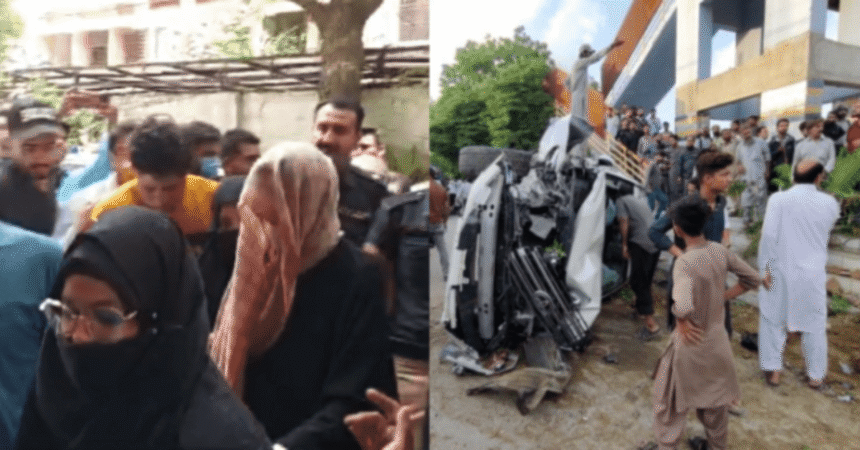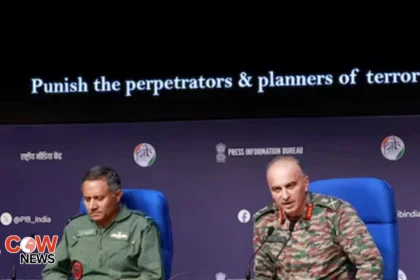In a significant development in the Karsaz accident case, Natasha Danish, the driver implicated in the deadly incident, has been granted bail by the Sindh High Court (SHC) concerning drug use allegations. This decision, announced on Monday, has garnered attention and raised various legal and societal questions surrounding the events that unfolded on August 19, 2023. The bail conditions require Natasha to submit surety bonds amounting to Rs1 million.
The Karsaz Accident: A Tragic Incident
The Karsaz accident occurred on August 19, 2023, when Natasha’s speeding Toyota Land Cruiser collided with three motorcycles and another car on Karachi’s Karsaz Road. The impact was devastating; it resulted in the tragic deaths of 60-year-old Imran Arif and his 22-year-old daughter, Amna. Three others sustained injuries, further exacerbating the sorrow surrounding this incident. The public and media reaction to the accident was intense, as it highlighted issues of road safety, driver accountability, and the broader implications of substance use while operating a vehicle.
In the wake of the accident, Natasha was arrested and charged. The ensuing investigation raised critical questions about her state at the time of the crash, with allegations surfacing that she was under the influence of drugs, specifically methamphetamine, a powerful and illegal narcotic.
Legal Proceedings and Bail Grant
During the recent court proceedings, Natasha’s lawyer, Farooq H. Naek, presented her case, asserting that she had already been granted bail in the main Karsaz accident case after a settlement was reached between the parties involved. This statement signified a pivotal moment in the legal proceedings, as it indicated some level of resolution, even amidst the ongoing challenges posed by the drug allegations.
The state prosecutor countered by arguing that Natasha was “high” while driving her vehicle. This accusation added a layer of complexity to the case. In response, Naek highlighted ambiguities in the medical report, which suggested that methamphetamine was not present in Natasha’s blood. When pressed for specifics about the quantity of methamphetamine detected, the state’s lawyer conceded that there was no mention of any measurable amount in the report.
Naek further argued that Natasha had been under psychiatric treatment for several years. He indicated that she might have been prescribed medication that could have resulted in the substances detected in her system. This defense aimed to challenge the assertion that Natasha was recklessly under the influence at the time of the accident.
The Court’s Perspective
Justice KK Agha, presiding over the case, acknowledged the significance of the settlement reached between the involved parties. He emphasized the humanitarian aspect of the situation, noting Natasha’s role as a mother of three children who had already spent over a month and a half in custody. The judge’s comments reflected a compassionate understanding of the personal circumstances surrounding Natasha while also considering the gravity of the accident and its implications.
The court’s decision to grant bail can be viewed as a balancing act between the legal principles at stake and the individual circumstances of the accused. While the judicial system aims to ensure accountability, it also seeks to uphold the rights of individuals who may be caught in tragic situations, particularly when personal hardships are evident.
The Allegations of Drug Use
The allegations of drug use significantly influenced the proceedings. The Sindh Inspector General of Police, Ghulam Nabi Memon, publicly stated that Natasha was believed to have been driving under the influence of methamphetamine during the incident. This assertion led to a separate first information report (FIR) being registered against her under Section 11 of the Prohibition (Enforcement of Hadd) Order (PEHO) of 1979. The classification of the offense under this legal framework indicates the seriousness of the drug allegations and the potential consequences Natasha faces.
The police formed a special investigation team to probe the circumstances surrounding the accident. The investigation included analyzing Natasha’s blood and assessing her behavior at the time of the crash. However, the results of the medical tests and the lack of clear evidence regarding drug levels in her system led to conflicting narratives regarding her culpability.
Public Reaction and Media Coverage
The Karsaz accident has drawn significant media coverage and public scrutiny. Following the incident, discussions about road safety, the dangers of drug use while driving, and the accountability of drivers have dominated social discourse. Many citizens expressed outrage at the loss of life and demanded stricter measures to ensure that such tragedies do not occur again.
Public reaction has also included calls for greater awareness about the risks of driving under the influence of drugs. Advocacy groups have emphasized the need for comprehensive education on substance abuse and its consequences on road safety. The Karsaz accident serves as a grim reminder of the potential devastation that can arise from reckless driving, particularly when substances are involved.
The Role of Family and Personal Circumstances
As the case unfolds, Natasha’s family situation has come to light, influencing public sentiment toward her. As a mother of three children, her personal circumstances evoke empathy from certain segments of the public. The narrative surrounding her family life adds a layer of complexity to the legal proceedings, prompting discussions about the implications of incarceration on families and the potential for rehabilitation.
Advocates for reform in the criminal justice system often point out that the impact of legal consequences extends beyond the individual accused. Families can suffer significantly when a member is incarcerated, leading to broader societal implications. In this case, the court’s acknowledgment of Natasha’s role as a mother suggests a growing awareness of the need for a more nuanced approach to justice, especially in cases involving personal tragedy.
The Broader Legal Implications
The outcome of Natasha’s case could set important precedents regarding how drug use allegations are handled in conjunction with vehicular manslaughter. Legal experts are closely monitoring the proceedings to understand how the court balances individual rights against public safety concerns.
If Natasha is ultimately found guilty of driving under the influence, the legal ramifications could extend beyond her individual case. It may prompt legislative discussions about stricter penalties for drivers found to be under the influence of drugs, especially in cases that result in injury or death. The Karsaz incident serves as a catalyst for broader conversations about road safety laws and their enforcement in Pakistan.
The Future of the Case
As Natasha Danish awaits the resolution of the drug-related charges, her situation remains precarious. The granting of bail is just one step in a lengthy legal process that could unfold over months or even years. The outcome of the drug case will likely impact public perception and the broader discussions about accountability and justice in Pakistan.
Legal analysts speculate that the forthcoming hearings will delve deeper into the medical evidence and the circumstances surrounding Natasha’s driving on the day of the accident. Testimonies from witnesses, police investigations, and medical professionals may play a crucial role in shaping the narrative as the case progresses.
Addressing Substance Abuse
The Karsaz accident has reignited discussions about substance abuse and its implications on public safety. Advocates are calling for more comprehensive measures to address the issue, including better education on the dangers of driving under the influence of drugs.
Programs aimed at preventing substance abuse, coupled with public awareness campaigns, could help mitigate the risks associated with drug use and driving. Additionally, there may be calls for improved access to mental health services for individuals like Natasha, who have reported histories of psychiatric treatment.
The Role of the Judiciary
The judiciary’s role in cases like Natasha’s is crucial. Judges are tasked with making decisions that not only uphold the law but also consider the human element involved in each case. The balance between ensuring justice for victims and recognizing the complexities of the accused’s circumstances is a delicate one.
The SHC’s decision to grant bail, while considering the personal circumstances of Natasha, demonstrates the judiciary’s attempt to navigate this complex terrain. The ongoing legal discussions will likely serve as a litmus test for how the judicial system addresses similar cases in the future.
The Karsaz accident case involving Natasha Danish has highlighted numerous critical issues surrounding road safety, substance abuse, and the complexities of the legal system. As Natasha navigates the legal proceedings, the implications of her case extend beyond her individual circumstances, influencing public discourse and potential reforms in Pakistan.
As the case unfolds, stakeholders from various sectors, including legal professionals, advocacy groups, and the general public, will continue to monitor the developments closely. The outcome will undoubtedly shape the narrative surrounding road safety and accountability in Pakistan, emphasizing the need for greater awareness and proactive measures to prevent similar tragedies in the future.
In a society grappling with the consequences of substance abuse and its impact on public safety, the Karsaz accident serves as a sobering reminder of the responsibilities that come with driving. The legal proceedings ahead will be pivotal in determining not only Natasha’s future but also the broader societal response to these pressing issues.
#KarsazAccident #NatashaDanish #SindhHighCourt #BailGranted #DrugUse #RoadSafety #PakistanNews







